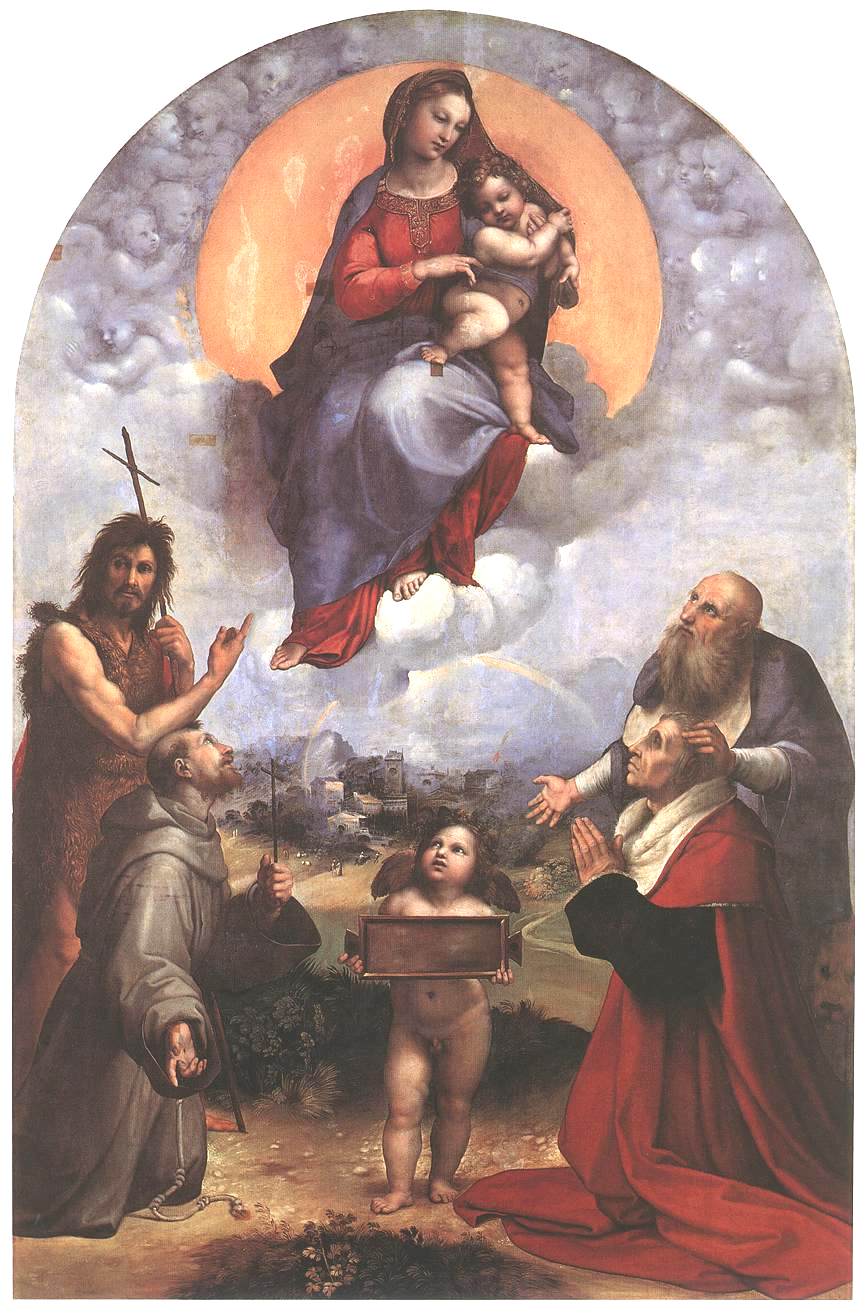The Madonna of Foligno
Story
The painting was executed for Sigismondo de' Conti in 1511-12. It represents the Madonna in Glory but it is usually called the Madonna of Foligno.
Raphael's pictorial research had been enriched by his solutions regarding the use of light in the Expulsion of Heliodorus and the Liberation of St Peter. These pictorial devices reappear in the Madonna of Foligno, now in the Vatican Museum. The Madonna and Child, borne by a cloud of angels and framed by an orange disk, dominate the group of saints below them, among whom is the donor. This group includes - from left to right - St John the Baptist, St Francis, Sigismondo de' Conti and St Jerome. A small angel at the centre of the composition holds a 'small plaque which was originally intended to carry the dedicatory inscription.
The painting was commissioned to commemorate a miracle in which the donor's house in Foligno was struck by lightning or - according to another version - was struck by a projectile during the siege of Foligno, although it was not damaged. The stormy atmosphere of the landscape background and the flash of lightning (or explosion) which strikes the Chigi Palace (visible at left) illustrate the legend. The strong characterization of the figures, the volumetric fullness of the putti and the refined chiaroscuro distinguish the panel (which was taken as loot by Napoleon's army in 1799 and returned in 1815) as a work of the mature artist.
